Jump Ahead To
Body swap is among the most interesting premises in literature: two, often largely different, characters exchange minds and end up in the body of the other. This weird phenomenon might be caused by magic, curses, wishes, or highly advanced technology.
What Makes Body Swap Fun?
Suddenly navigating someone else’s life is the conflict and challenge of this premise. Going about his or her daily routine, talking to other people, and even trying to keep the swap a secret always gives the audience something to look forward to.
More than the challenges and the exposed oddities, body swaps ultimately allow the characters to better see each other’s perspective. It leads to them being kinder and more understanding of other people.
So, what is the best body swap anime?
The same goes for anime and manga. There have been a number of series that explores this trope. Some series uses the premise as a central plot device while others use it for a story arc, or to drive a larger plot forward.
According to our friends at MAL, the body swapping anime with the highest rating is Your Name.
Without further ado, here are the top 10 body swapping anime to binge-watch next:
1. Your Name (Kimi No Na Wa)
MAL Score: 8.48

Of course, this Makoto Shinkai film is an instant hit at the time of its release. Since then, it has become one of the highest-grossing anime films ever.
It follows the story of Mitsuha, a high school girl in a rural area bored with her life and wishes to become a handsome city boy in her next life. For some (initially) unexplained reason, Mitsuha found herself in the body of Taki, a Tokyo high school student. Conversely, Taki also woke up one day in the body of a high school girl. While in Taki’s body, Mitsuha was forced to go on a date with Taki’s co-worker in order to sustain his relationship. Taki and Mitsuha “talk” to each other by writing messages, sometimes on their skin. The rest of the story follows them trying to find each other, made complicated by a giant comet destroying Mitsuha’s hometown and their memories fading away.
Your Name perfectly draws us in what seems like a simple life in everyday Japan, it punches you in the gut plus a sucker punch for good measure. Remembering how I saw it four years ago changes nothing, it got me and my friends crying real good. For a romantic story, it manages to tell a great one despite the two characters never formally meeting each other, except for a few brushes along the way.
The body swapping is not just physical and does not fall into the usual task of “walking in someone else’s shoes.” Its narrative paints a confusing and challenging swapping experience, primarily because of time not being linear and simultaneous in this case. Thus, it makes it impossible to be able to see your ‘other self’. It creates the very real sensation of wanting to know who is the other person more, with curiosity growing into a love that transcends time and space, literally.

2. Kokoro Connect
MAL Score: 7.83

Kokoro Connect heavily relies on the body-swapping trope to create conflict and drive the story. With a premise that is usually used as a joke, or for more mature content, the creators behind actually made a serious and engaging story and ran away with it.
Most students would probably relate to one of two things: joining a club with friends or out of genuine interest. Most students, however, would not have the courage to form their own club – what the Kokoroco team does. Five friends form their own club and sure enough, a supernatural being known as Heartseed toys around with them.

In the anime, there was about twenty body-swapping incidents between the five characters. Amazingly, none of them is played entirely for laughs. It is a serious story I think is a cross between AnoHana and Another, or School Days, whichever freaks you out more. While for anime fans, high schoolers dying is nothing new, Kokoro Connect actually tackles serious topics head-on. It covers being honest with one’s feelings, to mentally taxing issues like sexual assault. One of them suffers trauma from almost being raped. It also shows living on after death (as one character vows to “live life to the fullest”).
If I were to summarize Kokoroco in one word, it would be “unique”. It is an examination of the human psyche, with its secrets brought forward by a bored-sounding, apathetic Heartseed. A must watch and a refreshing experience once you get through it.
3. One Piece (Punk Hazard Arc)
MAL Score: 8.49

To start, its MAL rating covers the 900+ episodes of the series. Body swap only featured prominently in one story arc – Punk Hazard. In the series, there is a character named Trafalgar Law. He is a doctor who has the power to perform “operations” including swapping the minds of the characters.
For the Straw Hat Pirates, they end up in the deserted Punk Hazard. The world government used the island as a research facility before it turned into a half-hot half-cold wasteland because of an epic fight. Law, revealed as a pirate working for the government, cuts of the Marines from communicating with HQ and also swapped the hearts of the Straw Hats.

I have mentioned before how the body swapping premise is often used for laughs, and for driving a plot point forward. Punk Hazard is a good example of this. At the start of their swap, hilarity ensues. The violent Nami has to control herself while in the body of Cyborg Franky, or risk killing other people. Sanji, the chef, turns into her crush, Nami, with the boobs he has long dreamed of being in his arms’ reach, literally. The same happens with Tashigi and Smoker, much to the confusion and delight of the G5 Marines. Here’s why:
Punk Hazard, in my opinion, serves to illustrate the power Trafalgar Law has. It also shows the shift in the power balance that created the weird half-half island. While other fans doesn’t think too highly of the One Piece Arc, I think it works well since the series had to find its footing again after the time skip. It sets up the next arc, and one of the best so far: Dressrosa.
4. Gintama (Soul Switch Arc)
MAL Score: 8.97

Whenever there is a chance to include Gintama, expect us to do so. Again, like in One Piece, the use of body swap in this anime is mostly for laughs. Gintama goes with the outrageousness maxed out in true Sorachi-style goodness.
One is the aptly-named Soul Switch Arc, where Gintoki and Hijikata both get into an accident. This event was courtesy of our friend Truck-kun. As a result, they switch bodies and have to run their respective organizations. Gintama uses its signature mix of serious and hilarious in showing the shocked faces of Gintoki and Hijikata. It uses a slow-motion, multi-angle view of the truck approaching them. Even worse, a scuffle between the spirits splits Gintoki’s soul in two. The other half of his soul going into the rear end of a dead cat.
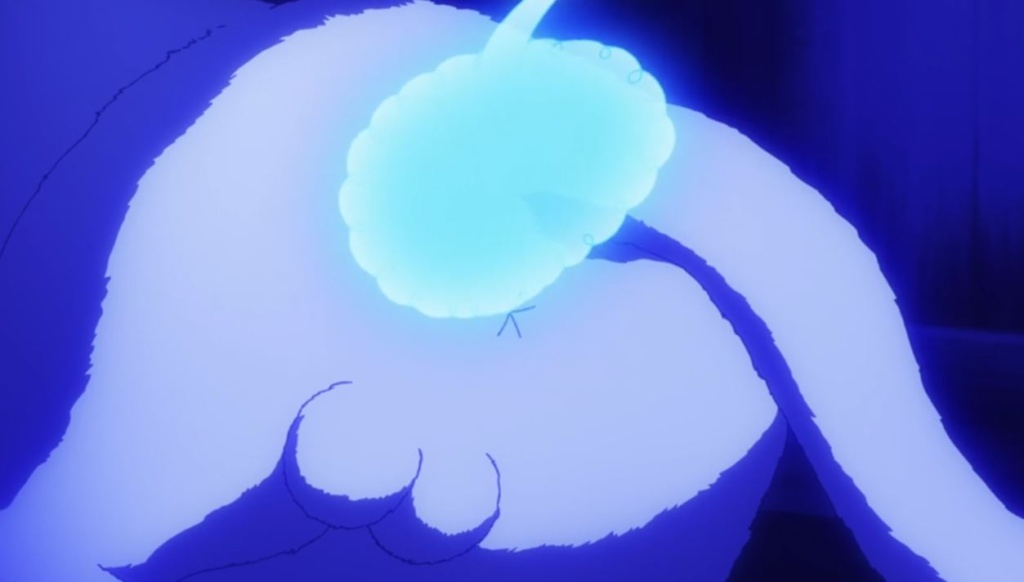
Hilarity ensues as each of them deal with their very dangerous subordinates, leading both men to exclaim: “Whether I’m there or here, it’s all the same!” Hijikata in Gintoki’s body is beaten up by the still-unpaid Kagura and Shinpachi. Meanwhile, Gintoki in Hijikata’s body has to survive Sougo’s less-than-subtle assassination attempts.
5. Motto To Love-Ru
MAL Score: 7.09

It’s always fun to point how To Love-Ru, when read in Japanese, sounds like “trouble,” which summarizes its harem setup. While body swap is also used as a plot device to move some of its episodes, the series’ magical nature makes things like this fit in naturally.
There are four instances of body swapping throughout the 2010 series. To keep spoilers at a minimum, the best example in our opinion is when Mikan and Yami swapped. Mikan wanted to try out Yami’s abilities. It focuses on two different perspectives revolving around Rito, as well as their different lives.
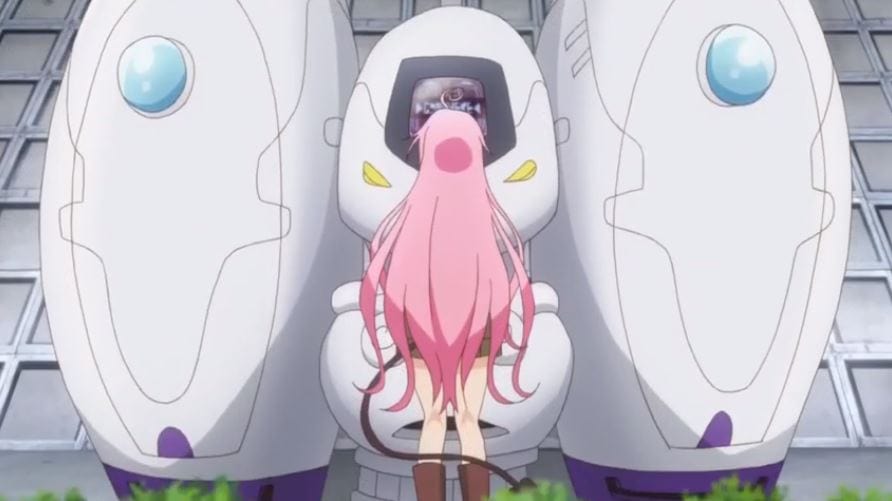
At the center of this body swap is the confused Rito, who remains clueless for most of the event. Despite the inevitable fan service, it does present some lessons on restraint and the value of thoughtfulness toward other people. In swapping a powerful assassin and a normal schoolgirl, it becomes a short-lived experiment between two entirely different characters. Simply put, Mikan got to enjoy the freedom and power Yami has, and learn the responsibility that comes with it. Yami, on the other hand, seems to learn restraint. She got to understand the lasting effects of her rash and violent actions while in Mikan’s body.
6. Yamada-kun and the Seven Witches
MAL Score: 7.68

As an anime in general, this is a definite must-watch. While supernatural in nature, it remains mostly a slice-of-life high school series, plus A LOT of kissing. Body swapping in Yamada-kun to Nana-nin no Majo both sets the story in motion and keeps it going.
Ryu Yamada-kun is a delinquent who crosses paths with the ace student, Urara Shiraishi, and wakes up the next day finding themselves swapped. The story soon reveals that kissing triggers the body swap. Following a suggestion, the two re-establish the Supernatural Studies Club and find that there are other “witches” in the school.

I can never stress it enough: kissing is an integral part of this series. It’s like the hot and cold water with Ranma 1/2. Either way, it does not turn this part of the watching experience comedic or harem-ish. Another cool part of Yamada-kun is that the search for the witches follows a pattern usually found in action anime. If you’re familiar with the team mate hunt like in Samurai 7, or Fushigi Yuugi. It’s like acquiring new heroes as the story progresses.
While Ryu and Urara are the main characters, a personal favorite is Maria Sarushima – whose power involves seeing the future of anyone she kisses. Her character development is also a story to follow in the anime. Her optimism and affability mask her distrust of the people believing that she has the power of premonition.
7. Punch Line
MAL Score: 7.02

If Yamada-kun takes a serious storytelling direction despite all the signs found in comedy-harem anime, Punch Line skips the serious approach – as the title should’ve clued you at the start.
A superhero named Strange Juice saves the people trapped in a bus hijacking but one of the passengers, Yuuta Iridatsu, soon finds his soul away from his body. A pervert cat spirit got his soul, guiding him and taking over his body. This spirit is soon revealed to become exponentially more powerful by – wait for it – seeing panties. The series then follows how the story unravels the story behind his home, and preventing the undergarment-powered cat from ultimately destroying the world.

From the first episode, it’s safe to say that the humor and the action also explode exponentially. Despite its outrageous premise and hit-or-miss comedy shots, it actually gets you on a fast-tracked adventure ride after the first four or five episodes – no spoilers for now. The premise alone should get you on the hype and start watching it now.
8. Birdy The Mighty: Decode
MAL Score: 7.46

Disclaimer: it’s not a strict body swap as much as body sharing. There are two versions of the anime: a 1996 OVA and a 2009 TV series. We will be focusing on the television series.
Birdy the Mighty follows the titular Birdy, a Federation agent chasing interplanetary criminals. Her hunt led her to Earth, where a high school student became a collateral damage from the encounter. To save the boy Tsutomu Senkawa from dying, Birdy fused the boy’s consciousness into her own body at least until they repair Tsutomu’s body.
It explores two consciousness inside a single body, with their differing opinions throwing a wrench in their everyday lives. For example, everyday living includes juggling Tsutomu’s life with Birdy’s interplanetary law enforcement duty and her disguise on Earth as an idol. The story is mostly serious, despite its potential for humorous and ecchi scenes. Rare instances of humor, I think, appear mostly on the first episodes, when they are still figuring out what to do, with a lot of bickering about a lot of things. It’s from Birdy having to eat a lot of human foods to Tsutomu inside Birdy pretending as Arita Shion – one hates the idol, one is confused about the idol, and it comes out as a fun and playful character different from both Birdy and Tsutomu.
PS: Tetsuwan Birdie has a lot of good music. Keep an eye, or ear, out for those.
9. Jojo’s Bizarre Adventure: Vento Aureo
MAL Score: 8.63
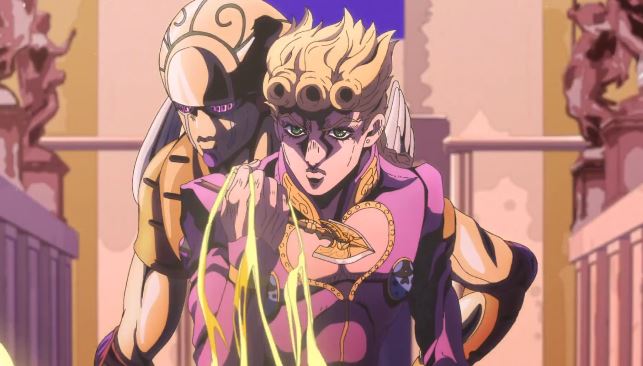
Jojo’s Bizarre Adventure, as a manga series, has seen eight parts already – each with a character called Jojo one way or the other. Among these, Part 5: Golden Wind (Vento Aureo), is often lauded as one of the best, and with good reason.
Vento Aureo’s body swap comes near the end of the series, making the chase for the series’ holy grail – in this case, an arrow that grants Stand abilities and upgrades them – a bit more suspenseful. In a race against the final boss, the team led by Giorno Giovanna (GioGio, or Jojo for consistency) gets all people and animals near the Silver Chariot Requiem swap bodies.

Golden Wind easily uses the body swap device to throw the chase for the arrow into complete disarray. It instantly turns into an “Among Us” situation, with everybody out for themselves and not knowing who was actually Diavolo – the mafia boss of Passione intent on taking them out one by one. When we first watched it, some of us missed who the boss was, twice.
10. Cardcaptor Sakura
MAL Score: 8.16

One of Clamp’s most iconic series, Cardcaptor Sakura, follows a fourth-grader and her quest to undo the Clow Cards she has unleashed upon the world – before it falls into the wrong hands.
One of the episodes in its anime adaptation is their encounter with the Change Card, which unsurprisingly, changes two people into each other. In an attempt to capture the Card, Li Syaoran and Keroberos pin the creature from the card down and finding themselves swapping bodies shortly after. The two cluelessly blunder their way in the body of each other – Syaoran trapped in the body of a small plush-like creature while Kero has to live the normal student life Li Syaoran has. They mess it up badly that other people soon figured what’s happening.

For non-Sakura fans, Li Syaoran is the serious rival character to the protagonist as well as a love interest later on in the story. Imagine him being in the token mascot character, confused and making mistakes one after the other. Syaoran, the brooding, serious-y character who somehow ends as a prize in a claw arcade machine. Also, rewatching the series, I found out that this episode is a great fit. The Change Card turns into a light and comedic episode. It is placed between the part where Sakura basically turns into Ultraman and the Cardcaptor on Ice Episode. The latter marks where the Sakura – Syaoran ship starts sailing.
Bonus: Other Anime / Manga With Body Swapping Worth Mentioning
While we have laid down our top ten picks, there are still a number of anime that features the body swap technique. Here are more choices for your next body swap binge watch session:
11. The World God Only Knows
MAL Score: 7.75

One of the best in the online gaming community receives an invite from a stranger, only to find out that the creature from the other end of the line is actually not from our world. Nope, this is not No Game No Life, but a dating-sim focused version that became a hit in its own right – Kami nomi zo Shiru Sekai, aka The World God Only Knows.
Kaminomi follows Keima Katsuragi, a high school student known online as “The God of Conquests” for his ability to “conquer” any dating sims. Unfortunately, in the anime, the body swap appeared only in anime as a brief flashback. It was more explored in the manga, where Keima swapped bodies with Yui Goidou, a drummer. Their body swap also prompted The Conqueror to play dating sims for girls (ie, .
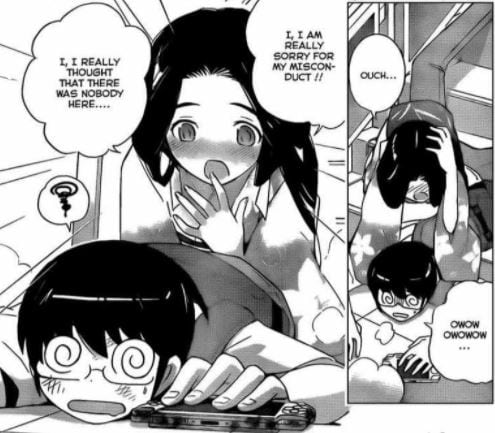
The refreshing part of this story arc is the presence of an adaptable heroine – Yui. She appears initially reserved and awkward in Keima’s body. Later, she becomes assertive, strong, and more masculine – even calling herself “boku.” Most body swap events are a one-time event only. In Yui’s case, it actually triggered her character change. She has been finding ways to pursue her passion while trying to uphold her responsibilities to her family. Learn, through another lens, how Yui becomes the drummer for the 2-B Pencils, together with Elsie and previous targets Miyako and Ayumi while still managing her responsibilities to her family.
12. Fairy Tail
MAL Score: 7.72
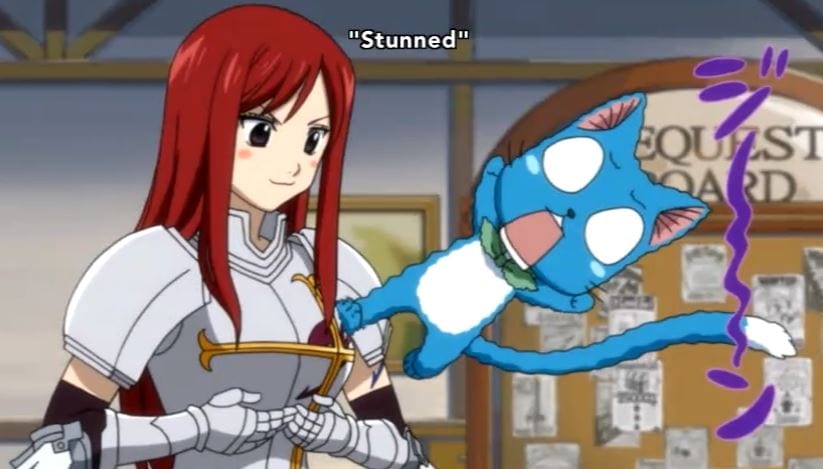
From the creator of Rave Master (if that still isn’t obvious) is one of the biggest series of this generation. Almost any form of magic you can think of has appeared in the land of Fiore – from making text materialize, to the elements, to the body swap of course.
There is a body swap in an anime-only filler episode, and there is another in the manga not yet in the anime. The first is in Episode 19 of the anime when they found the strange Changeling magic, everyone in the guild swapped bodies with each other. Only their resident scribe scholarly mage Levy has the skill to turn them back.

I think Fairy Tail has become famous for two reasons: the impressive magic-based fights and the relentless fan service. This episode does both. My favorite, however, is how Levy was the deciding factor – an obviously non-combat character being the center of an episode. This attempt by the anime to round its characters well works in its favor.
13. Selector Infected WIXOSS
MAL Score: 7.28
Things are not always what they seem. This descriptor perfectly applies to this underrated series. The body swap here is more complicated than any other entries in this list. Also, I think it came out at the height of trading card battle anime, and it still comes out as a unique entry, maybe because its story moves far beyond the card game it was based on.

In the series, WIXOSS is a popular trading card game where players fight against each other with cards that hold fighters called LRIGs, and their wielders being called Selectors. A lot of people draw parallels between the WIXOSS anime and Puella Magi Madoka Magica for a lot of reasons – some for the animation style while others for the “magical girl” trope. However, while Madoka Magica sets off introducing us to the girls with magic, WIXOSS does the opposite and makes the reveal a twist. To avoid spoilers, know that LRIGs are not just Yu-Gi-Oh representations of cards, they are so much more.
Anyway, I think among the anime with body-swapping devices, this is the most technical and most interesting to unfold. Although it appears near the end (episode 9 of the 2014 selector infected series), it still manages to wrap up the purpose of all the fighting.
Additionally, despite the inevitable comparison with Madoka Magica and the countless card game anime, WIXOSS deserves more attention. It has darker undertones, it’s twisted, in-universe mechanics. Heck, you don’t even have to understand how the game works to understand the anime. Also, save all your questions about its story and such, because once the endgame comes, it wraps all nicely.






![What does Tanjiro’s black sword mean? [All Nichirin Sword Colors Explained]](https://chasinganime.com/wp-content/uploads/2020/01/Nichirin_Sword-100x70.png)
